- Forest red ants
- Forest Ant Life
- Anthill and ants
Forest red ant - one of the most common inhabitants of Eurasia. It can be found not only in the south of Great Britain and in Russia, but also in the Alps and even in the Caucasus. Familiar with him and the inhabitants of North America. This public insect belongs to the order Hymenoptera genus Formica. Representatives of this species lead a community lifestyle. The anthill of red forest ants is inhabited by males and females, as well as workers (females whose ovaries have not developed).
Features
Redheads, or as they are also called red forest ants, prefer to settle in coniferous, deciduous or mixed forests. According to the description, it is an ordinary ant: it differs from the domestic red ant of the pest, which often gets into the house, only in size. Dense build insects in sizes can reach up to 14 mm. The bottom of the head and chest are reddish-brown, the abdominal part is black and shiny.
Red ants have a convex trapezoid clypeus and 2 pairs of membranous wings. On the head there are facet eyes not distinguished by good vision. The organ of touch is the long antennae. The presence of stereoscopic smell allows the insect to perceive aromas in volume. The stalked abdominal part hides the gland filled with a special secret substance. The powerful muscles of the ant are capable of throwing out a secret for even a dozen centimeters. A photo of forest red ants is presented below.
Anatomical differences are pronounced in forest red ants: in black winged males paws of yellow or red color. They have a longer elongated abdomen and a smaller head. A distinctive feature of females is the red-brown shade of the head, chest, and stalk of the abdomen.
On a note!
The presence of wings in females is observed only during the mating season. After mating, the females bite them, resulting in a weakening of the corresponding muscles.
Mirror-black abdomen has a rounded shape. Working individuals are the smallest, their body length does not exceed 9 mm. They have no wings, but there are mandibles.
Lifestyle
The forest red ant has been working all his life. Each individual does a specific job: some build a dome anthill, others protect him, still others get food, and the fourth guard aphids. There are also individuals caring for the uterus. This work is equivalent to the most skilled. After all queen uterus is an essential element of anthill life. It is a large-sized individual with well-developed ovaries, which is engaged only in egg laying.
Interesting!
Males exist exclusively for mating, at the end of this process, they usually die.
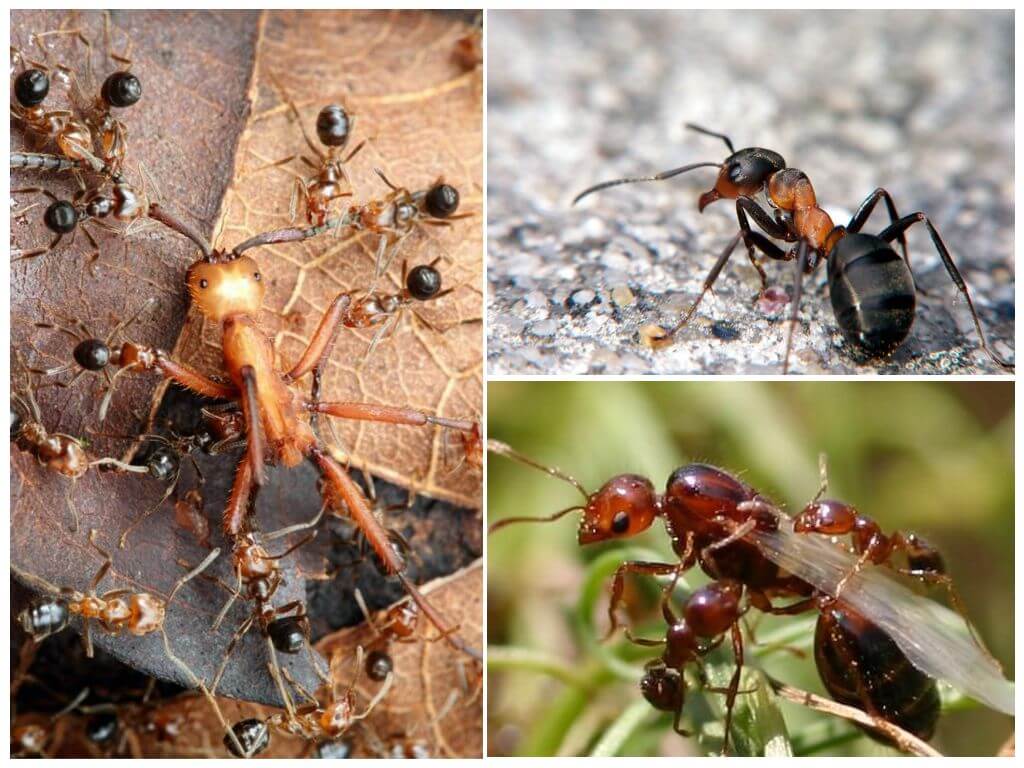
Breeding
Activity forest red ants begin to show in April. Flying out of their nests, insects go in search of a partner. After fertilization, the female returns to her native anthill, where after a while she gets a new family. Over time, the number of ants living in the anthill can reach up to 1 million individuals. When insects feel crowded, some of them leave for the foundation of a separate colony.
And it may happen that a fertilized female wanders into a strange anthill, where she will be protected by working individuals. Further events will unfold in a similar way.
The expectant mother can also wander into the forest anthill of brown ants and take the place of the queen-uterus in the absence of such. After some time, the young offspring that have already grown up begin to rule the ant hill on legal rights, rebuilding the abode according to their preferences.
If in such an anthill there is its own uterus, then both forest queens get along well, mutually managing the farm.
Interesting!
A twin female once lays eggs during the rest of her life (her life span can reach up to 20 years). The female places the eggs glued into one lump in a special chamber, and after several weeks larvae are born. The process of their development in pupae takes up to 6 months.
Until the first working individuals appear, the uterus does not feed on anything. To feed the larvae, she uses special gland secretions and fat reserves, which she managed to stock up earlier. The female can feed the largest larvae even with a part of the laid eggs.
The first working individuals of forest red ants that were born, having gone outside, are sent to search for food. From this moment, the uterus is only engaged in the reproduction of eggs. All duties are assigned to the worker ants.
Interesting!
During the season, the anthill is replenished with the offspring of one sex: either females or males. That avoids closely related relationships.
With the advent of winter, forest red ants try to climb into the deepest part of the anthill, where it is much warmer than on its surface. Gathered in a tight lump and numb insects winter in this state until spring.
What is an anthill
Many of us have come across a large anthill in the forest. Sometimes its height can reach up to 2 m. Such cone-shaped shelters are built by forest red ants from the ground, small twigs, as well as leftover food debris. As a result, the anthill does not get wet even during heavy rain.
The waterproof exterior of the ant house allows you to maintain the necessary level of humidity inside. The consequence of this is the decay and decomposition of those plant elements that make up this design, which actually contributes to the heating of ant housing. The forest red ant is a real clean-up, he regularly cleans his house from unnecessary food debris, dry egg shells, and also dead individuals.
When the necessary microclimate is maintained in a building that has reached a certain size, the working individuals of red ants begin to build chambers inside it for keeping larvae, storing food and wintering. Such forest structures bring great benefits to the environment: the soil is enriched with useful substances and its structure is improved. The stumps in which ants live smolder and decompose much faster.
Nutrition
Various insects and invertebrates serve as food for forest red ants. It is surprising that the forest inhabitants eat not only living insects, they do not disdain corpses. Protein food serves as food for the larvae. Adults, on the other hand, consume carbohydrate foods, usually the secretions of sucking insects (scale insects, cicadas).
Especially the red ants love the pad (sweet aphid secretions). They breed aphids and even take them with them to the anthill for the winter. Exactly because of this reason the appearance of these insects in the garden causes in many summer residents a panic mood. With great pleasure they use red forest ants and vegetable juices, mushrooms, as well as seeds.
All ant prey is distributed equally among all the inhabitants of the ant hill.
Do forest dwellers have enemies
Many forest workers have enemies who feed on ants. Various birds and insectivorous animals pose a serious danger to them. In addition to the red ants themselves, the anthill can also be inhabited by other insects: lomehuza beetles that feed on ant brood, staphilins beetles that eat the remains of an ant table, and parasitic ticks.
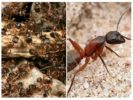
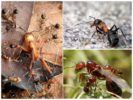
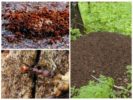
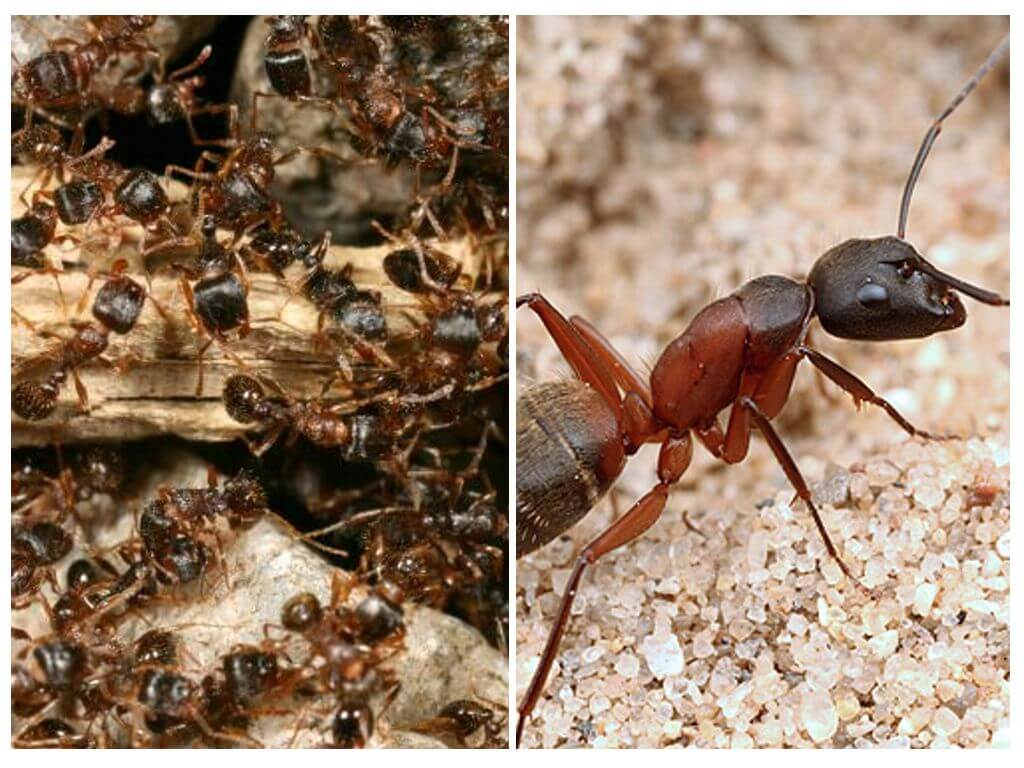
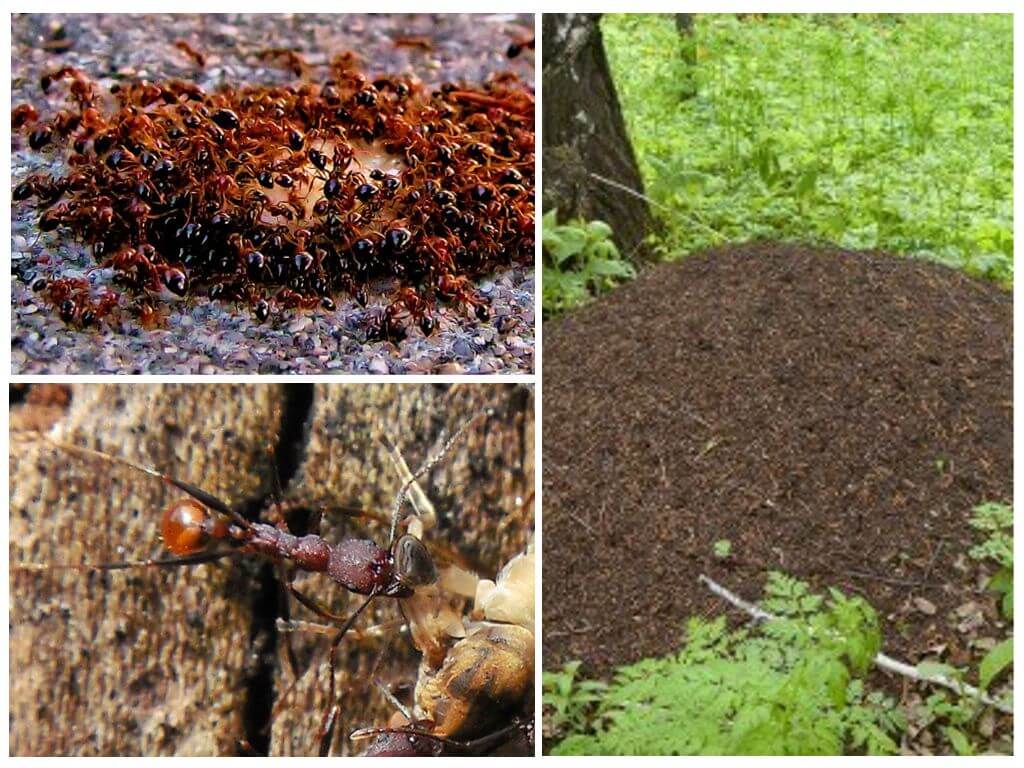
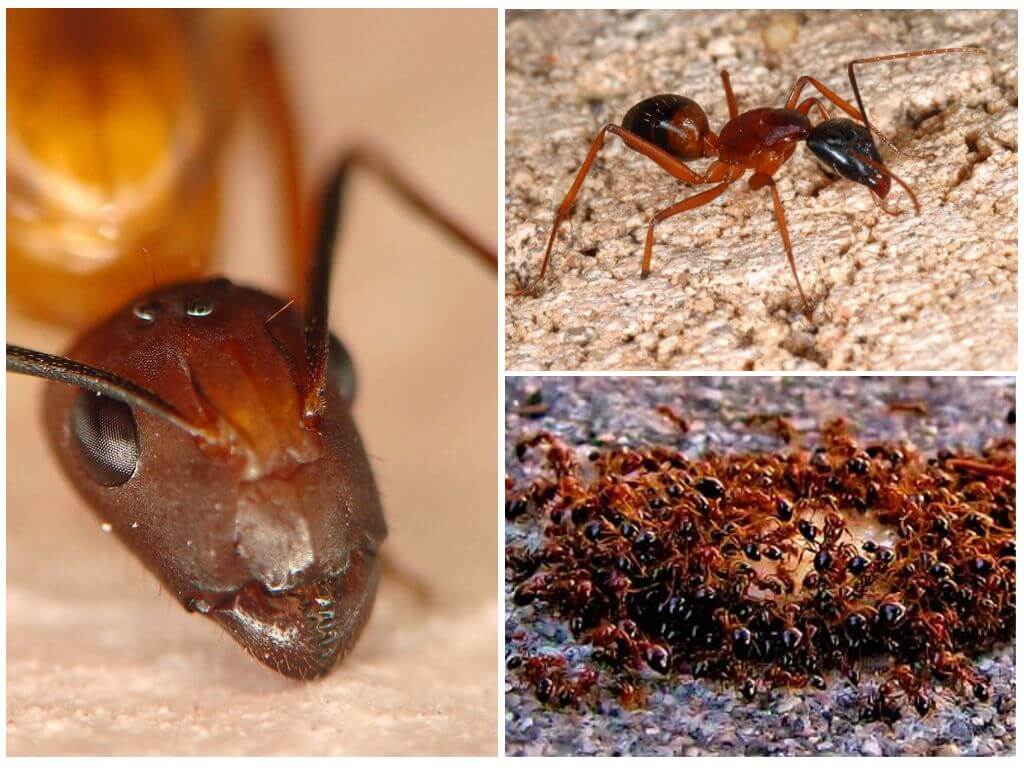
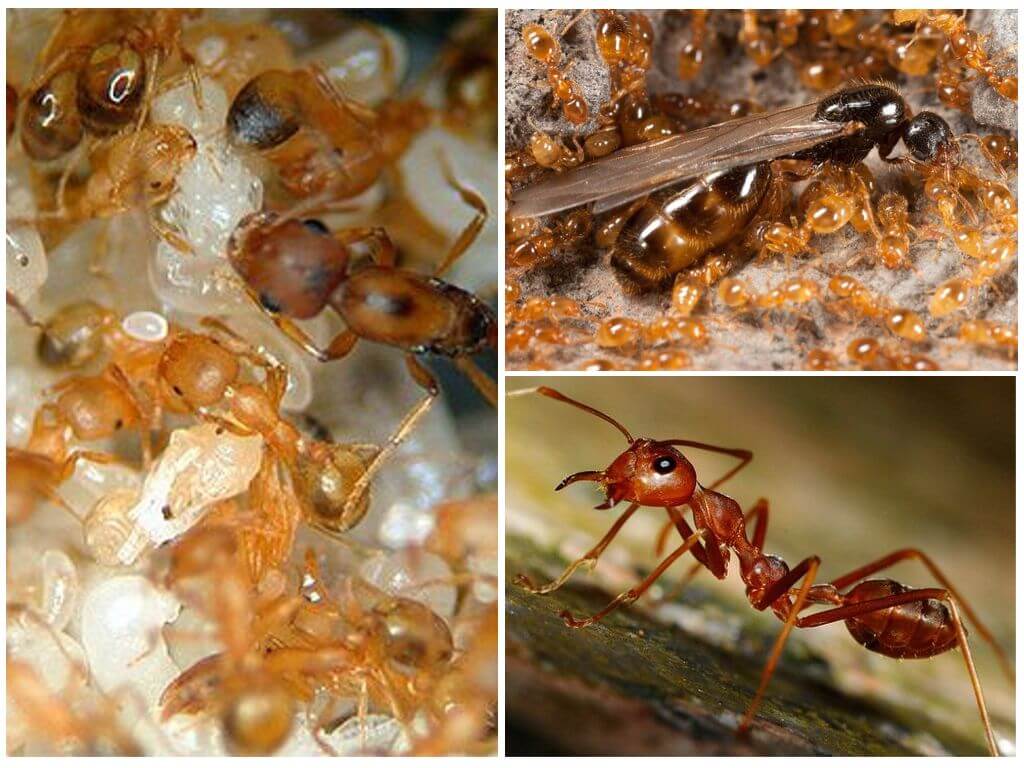
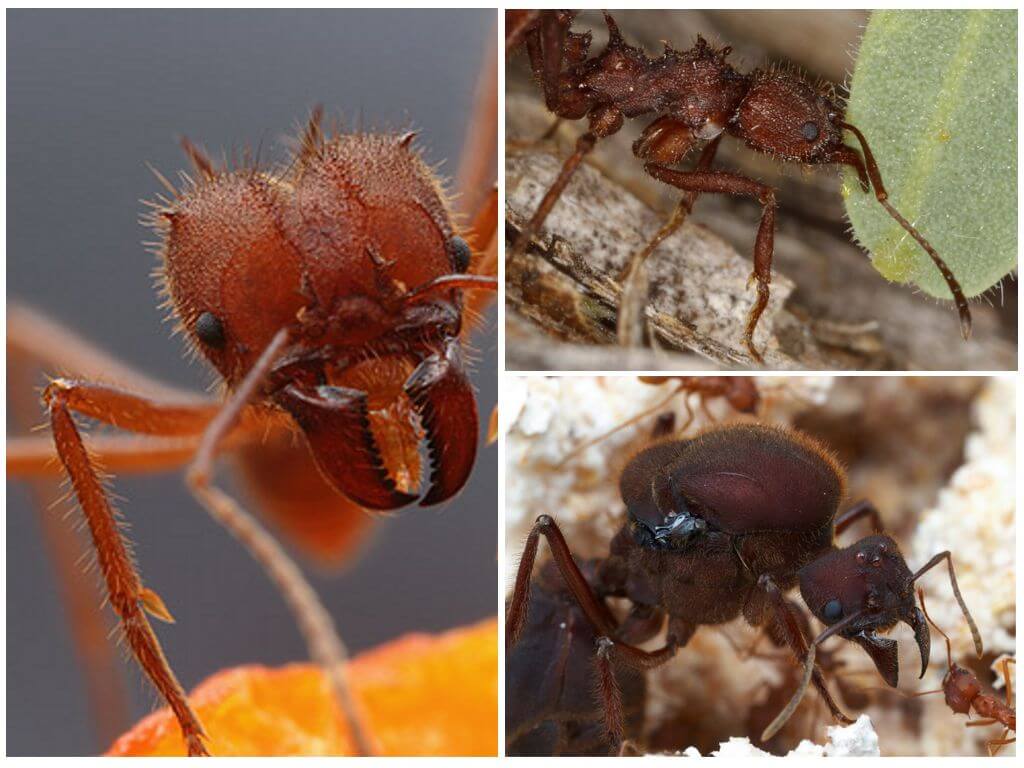
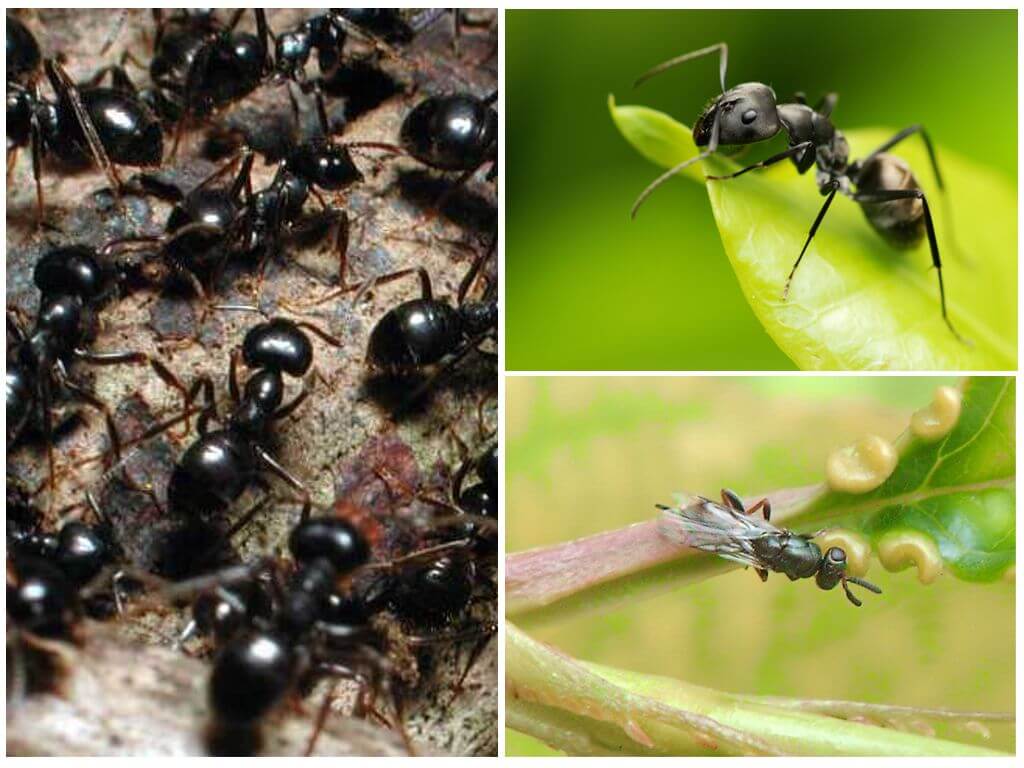
In childhood, they often loved to watch the life of ants. Their working ability is striking - insects are constantly in motion, and all the time they are busy with something and constantly carry something.
Forest red ants are real workers. To build crumbs of such sizes an anthill is very difficult.
Because of such "workers", so many aphids in the garden divorced. I do not know what to etch.
The store has a lot of effective drugs for every taste and budget.
Cool tool Thunder.
I read on the Internet that ants can be disposed of with urine. Does anyone know about this method?
I don’t know urine, but boiling water definitely helps.
Forest ants can easily remove garden pests.
I don’t know how to get rid of ants in the garden. I heard that semolina helps or millet.